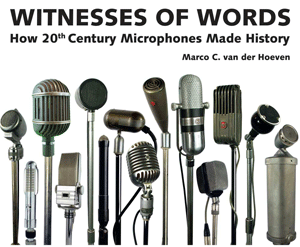|
This month: another model of the Austrian AKG (Akustische und Kino-Geräte = Acoustical and Movie-Devices) company.
Trust me: I do not own any stock in this company, but AKG used to be very innovative in their microphone designs and has produced a number of different classics. Unfortunately these days it just turns out a lot of more mediocre products.
The AKG D 222 is a dynamic cardioid containing two elements; one for the high frequencies, placed closest to the front, and a second one especially for the low frequencies, behind the first, facing backwards (the design resembles that of a two-way loudspeaker).
This extends frequency reach and minimizes the proximity effect (exaggerated low frequencies when used close to the sound source). The microphone reproduces all sounds evenly, whether coming from up close or further away, and sounds very natural.
It was designed in 1978, as successor to the similar, but bigger D 202 from 1966. These were the first AKGs to use a sintered cap: a very effective wind shield and pop screen.
The D 202 and D 222 were often used in studios in the Seventies and Eighties to record drums and other instruments, like horns, strings, and piano. The D 202 was the best of the two, with a more refined sound, and the only one that AKG labeled as 'studio microphone'.
In the early Nineties these models were discontinued, although the D 222 was replaced by the triangular shaped D 3600; another two-way design, which was only produced for a short time.
If you ever saw a film or video clip, from the late Sixties, or Seventies, with a singer using a microphone with two windscreens (a sort of dumb bell like shape, like the boom microphone in the AKG Two-way microphones brochure), you can be sure he holds an AKG D 202 or D 222 in his hands.
Although produced in Austria, these microphones were extensively used in Great Britain. All BBC reporters used them. They can be still seen in British Parliament, where they have been used for decades and maintain their task of delivering intelligible sound under difficult circumstances.
When the BBC turned 50, British Royal Mail celebrated the event with a commemorative stamp depicting microphones all made by AKG, except for a few historical types. AKG has been one of the leading microphone companies in the world for the last seventy years.
This is one of the types that feature in my book Witnesses of Words, which was recently released. More information about that can be found at www.witnessesofwords.com

|
|
|
|
|
|
Theresa May at the AKG D 222 |
|
|


 Video's
Video's Contact
Contact







